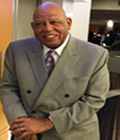What new mindsets are needed to harness change in higher education?

A new mantra in business is that the only thing that stays constant is change. Change is inevitable and is the new norm for our world. Just as businesses have to deal with change, our educational institutions need to embrace and harness the dynamics of change.
For educators in higher education, the critical questions to be asked are: What new mindsets are needed to harness change considering the shortage of racial/ethnic minority faculty on college and university campuses? What is the Institute on Teaching and Mentoring? What are key points presented at the Institute for PhD scholars?
The Institute on Teaching and Mentoring provides minority scholars with the knowledge and skills needed to succeed in graduate school and to prepare them for success as faculty members at colleges and universities. The Institute provides scholars and their faculty mentors with opportunities to share knowledge about research and academia, to meet other scholars and faculty members and to link to a larger community of scholars and faculty in various academic fields.
The focus for the 24th Annual Conference of the Institute on Teaching and Mentoring was “Teaching.” Presiding for the opening session was Dr. Orlando L. Taylor, vice president for Strategic Initiative and Research and executive director of the Center for Social Innovation at Fielding Graduate University. Following are excerpts from Taylor’s session on the dynamics of change, staggering statistics and new mindsets needed by the Institute’s PhD scholars, faculty and staff members to harness change in higher education.
Dynamics of Change
Giving an understanding of change, Taylor discussed that every year in higher education is different. Change occurs in institutions through various means such as technology, delivery systems, organizational structure, new students, leaders and personnel arrangements. Just like shopping online is a new form of buying products, students taking courses online is a different and new form of learning. In fact, one third of students earn degrees online, says Taylor. Although the central role of faculty has not changed, faculty must become technology savvy, connected to societal needs and more diverse in our institutions of higher learning, says Taylor.
Staggering Statistics
Our educational institutions produce about 35 African American PhD mathematicians yearly, and it will take approximately 130 years for 4500 colleges to hire at least one new African American PhD mathematics faculty. Additionally, 60 percent of all college students are women. Students of color will be the majority of college students in 15 years, yet African American and Hispanics continue to be underrepresented on faculties in higher education, says Taylor.
Adding to these amazing statistics, Taylor highlighted there were 51,008 PhDs granted in 2012 by race and ethnicity. The breakdown of degrees include Black, Non-Hispanic (2,567); American Indian or Alaska Native (107); Hispanic (3,058); White, Non-Hispanic (27,247); Asian (12,984); Native Hawaiian or Pacific Islander (71) and Other/Unknown Races and Ethnicities (4,974).
Of the 1.5 million faculty in 2014, Taylor further highlighted the lack of faculty diversity in higher education despite 40 years of attention to this issue. The breakdown of faculty include Black (6 percent); American Indian/Alaska Native (less than 1 percent); Hispanic (5 percent); White (79 percent) and Asian/Pacific Islander (10 percent).
In sharing statistics of women in the field of STEM (Science, Technology, Engineering and Mathematics), Taylor reported that there has been progress of women faculty at community colleges (58 percent) and four-year institutions (46 percent). Overall, women comprise of 40.6, 33.9 and 19.4 percent respectively of assistant, associate and full professor positions in STEM. Women of color, however, only represents 4.5, 3.7 and 1.2 percent respectively of these same positions in STEM, says Taylor.
New mindset:
In order to deal with these staggering statistics, Taylor encourages current faculty members and staff mentors of the Institute to lead and mentor PhD scholars for a different future enabling them to even surpass their accomplishments.
Taylor emphasized to the PhD scholars that they must make a few vows as future faculty members. For instance, they should recognize that the PhD is not a license to rest, but a mandate to serve; avoid cutting corners; be ethnical; stay committed to the community; consider all of their options and bring people like them along to the profession.
Taylor further emphasized to the scholars that we can’t afford to lose them. He indicated that they are the next generation of imminent scholars, great teachers, leaders, administrators and citizen soldiers for change. To get the very best from the Institute on Teaching and Mentoring, they must interact with people different from them, share their disciplinary and cultural perspectives and be receptive to other cultural perspectives, says Taylor.
Taylor closed with a challenge to the graduates using the favorite quote by George Shaw (“Dare to Dream).” The quote reads, “Some people see things as they are and ask “why;” I dream of things that never were and say, “Why not.”
As we embark upon this 21st century, the only constant is change. For educators in higher education, we must either lead the change or be led. Taylor’s ending quote to the PhD scholars is key. He encourages the PhD scholars to build a new community of dynamic leaders and a roadmap for others to follow.
Dr. Ronald Holmes is the author of 15 books and publisher of “The Holmes Education Post,” an education focused Internet newspaper. Holmes is a former teacher, school administrator, test developer and district superintendent. He can be reached at [email protected]

